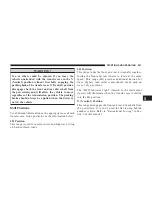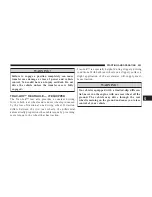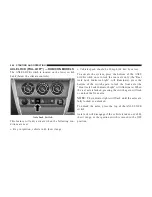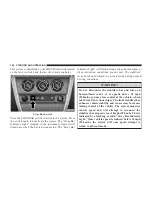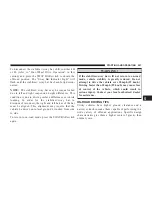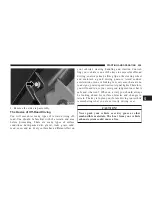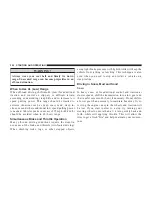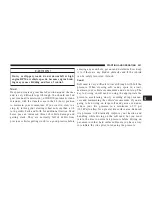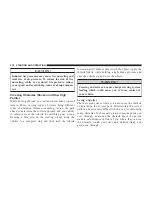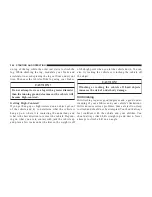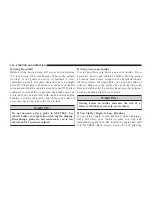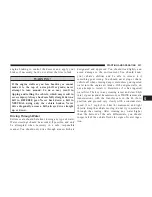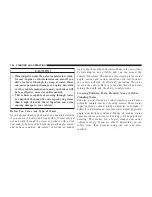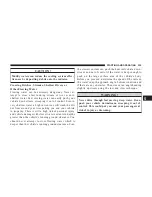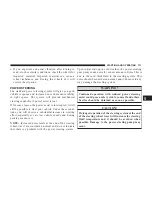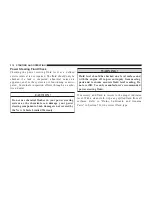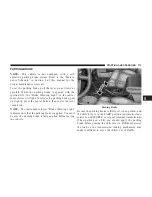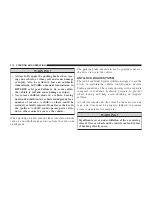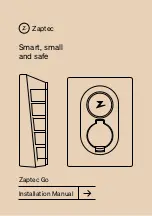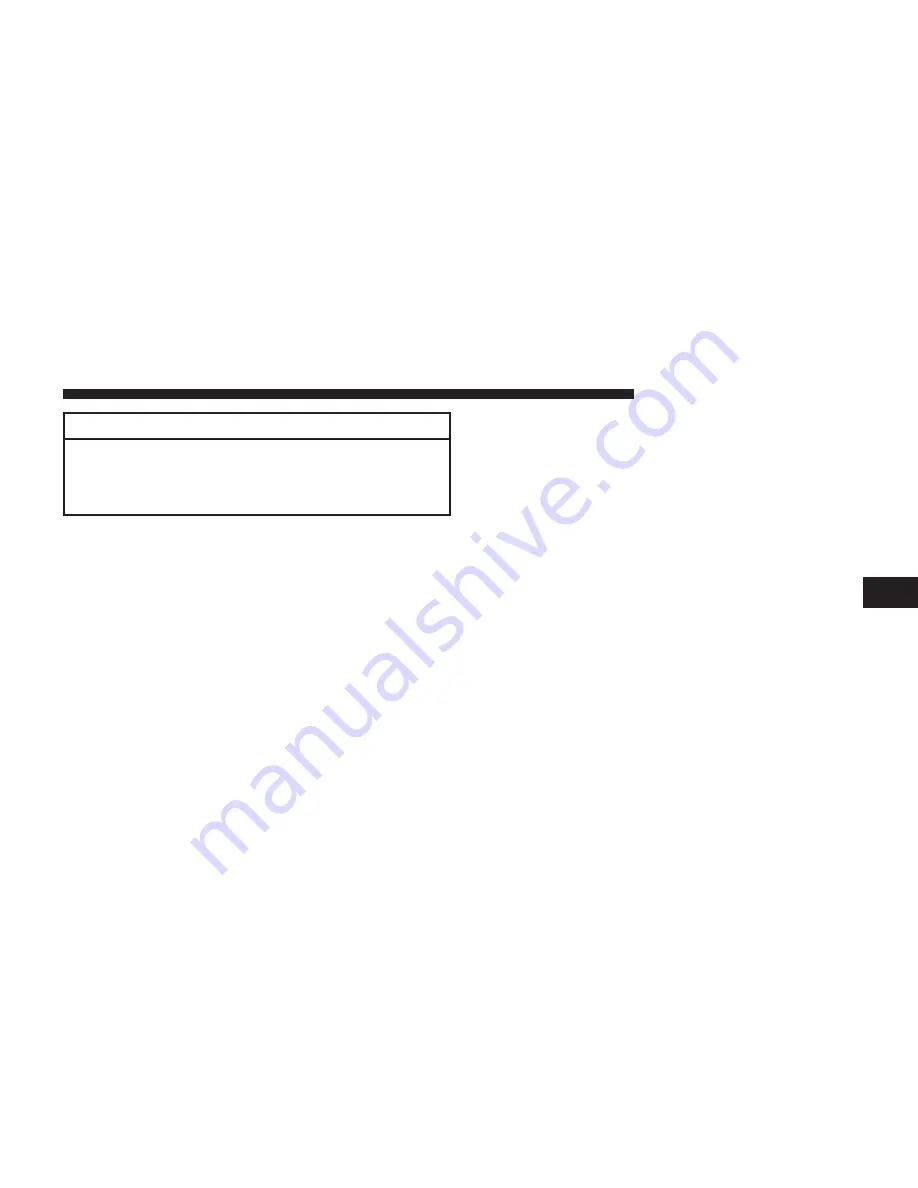
CAUTION!
On icy or slippery roads, do not downshift at high
engine RPM or vehicle speeds, because engine brak-
ing may cause skidding and loss of control.
Mud
Deep mud creates a great deal of suction around the tires
and is very difficult to get through. You should use 2nd
gear (manual transmission), or DRIVE (automatic trans-
mission), with the transfer case in the 4L (Low) position
to maintain your momentum. If you start to slow to a
stop, try turning your steering wheel no more than a 1/4
turn quickly back and forth for additional traction. Mud
holes pose an increased threat of vehicle damage and
getting stuck. They are normally full of debris from
previous vehicles getting stuck. As a good practice before
entering any mud hole, get out and determine how deep
it is, if there are any hidden obstacles and if the vehicle
can be safely recovered if stuck.
Sand
Soft sand is very difficult to travel through with full tire
pressure. When crossing soft, sandy spots in a trail,
maintain your vehicle’s momentum and do not stop. The
key to driving in soft sand is using the appropriate tire
pressure, accelerating slowly, avoiding abrupt maneu-
vers and maintaining the vehicle’s momentum. If you are
going to be driving on large soft sandy areas or dunes,
reduce your tire pressure to a minimum of 15 psi
(103 kPa) to allow for a greater tire surface area. Reduced
tire pressure will drastically improve your traction and
handling while driving on the soft sand, but you must
return the tires to normal air pressure before driving on
pavement or other hard surfaces. Be sure you have a way
to reinflate the tires prior to reducing the pressure.
5
STARTING AND OPERATING
301
Summary of Contents for 2009 Wrangler
Page 1: ......
Page 4: ......
Page 9: ...1 INTRODUCTION 7...
Page 78: ......
Page 196: ......
Page 201: ...INSTRUMENT CLUSTER 4 UNDERSTANDING YOUR INSTRUMENT PANEL 199...
Page 340: ...338 STARTING AND OPERATING...
Page 382: ......
Page 394: ......
Page 446: ......
Page 477: ...INDEX 10...
Page 496: ......





